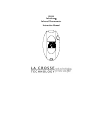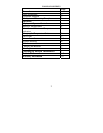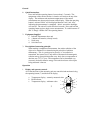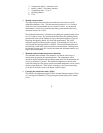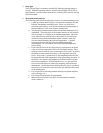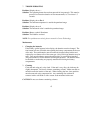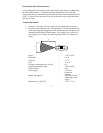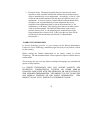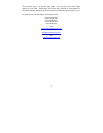5
5. Back light
The LCD back light is constantly switched ON while the operating button is
pressed. When the operating button is released, the backlight will be ON for
approximately 4 seconds before automatically switching off 8 seconds after the
last measurement.
6. Measurement inaccuracies
The following points should be observed in order to avoid measurement errors:
a. It must be ensured that the object to be measured completely fills the
Infrared Thermometer monitoring area. Errors can occur when
measuring small objects, as the unit also monitors the temperature of
the surroundings as well as the object to be measured.
b. The principle of measurement requires the ambient temperature to be
determined. This takes place at one-minute intervals or each time the
unit is switched on. Changes in the ambient temperature, which can
occur when the user holds the unit in their hand, are not monitored
within this time period and therefore neither of them is taken into
account when determining the indicated temperature. A gradual
warming of the unit (the lens) between ambient temperature
measurements can, for example, lead to the indicated temperature
slowly falling.
c. If the emission factor for the object does not correspond to the preset
value of 0.95, the temperature will not be calculated correctly. Most
surfaces have an emission factor in the range of 0.8 to 0.98. In general,
the darker and more matte the surface is, the larger their emissions
factor. If the factor is greater the 0.95, the temperature indicated will
be greater than the actual temperature of the object being measured. If
the factor is less then 0.9, the temperature indicated will be less than
the surface temperature. Polished metals have a very low emission
factor and are therefore not suitable for measuring with an infrared
thermometer. On the other hand, affixing adhesive tape to or painting
the surface will increase the emission factor and reduce the inaccuracy
of the measurement.
d. It is not possible to take measurements through transparent materials
(glass, plexiglas, etc.).
e. It is not possible to measure air temperatures.
f. Measurement errors can occur due to air contaminated with dust,
steam, smoke, etc.



